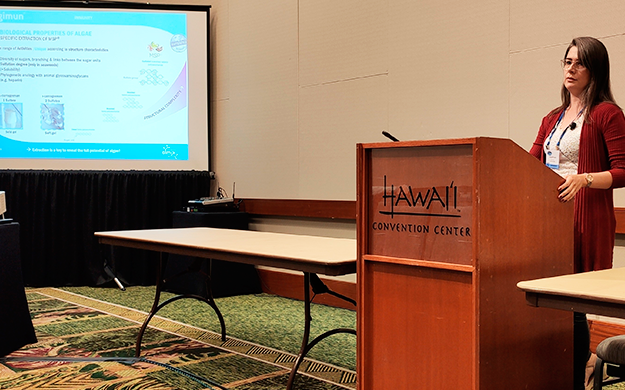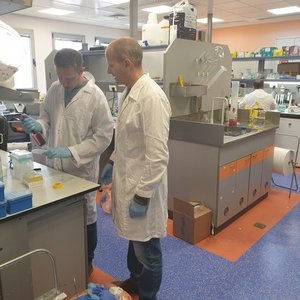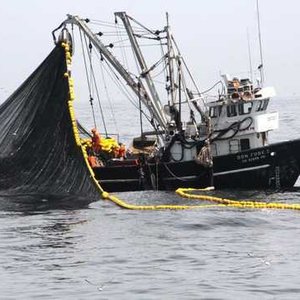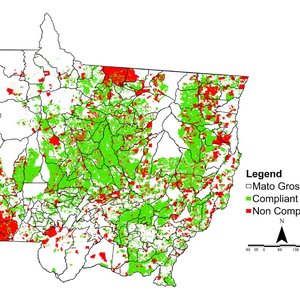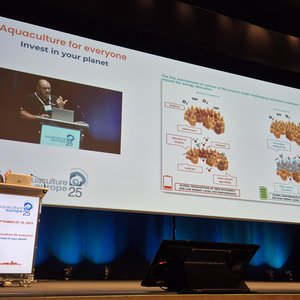Olmix Group was invited to share its expertise on sustainable aquaculture at the recent Aquaculture America 2020 conference that took place in Honolulu (Hawaii) where the company focused on immunity and mycotoxin risk and shared recent scientific research and studies on the viability of specific marine algae extracts to tackle these main challenges for producers.
Sulphated polysaccharides to face immunity challenges on rainbow trout
By using the vast sustainable marine resources of the coast of Brittany (France) and in collaboration with several research bodies, Olmix has been able to isolate, identify and concentrate sulphated polysaccharides from the cell wall of macroalgae that have different activities to support the general health of animals. Some of these isolated polysaccharides include activities such as immunomodulation, mucin secretion and the strengthening of intestinal barrier functions.
Olmix has recently performed a trial in rainbow trout in an indoor race-way fish farm located in São Paulo, Brazil for 11 weeks. Two isonutritive diets, control and test (commercial feed based on a combination of green and read algal extracts), were tested only to differing on the inclusion of 0.3% of macroalgae polysaccharides.
The hemolytic activity was improved in macroalgal sulphated polysaccharide fed trout and increased at week 11 compared to week 4 for both groups. The lysozyme activity was not significantly affected.
“These results highlight the potential effects of macroalgal sulphated polysaccharides on improving the innate immune response of skin-mucus in rainbow trout. In pursuing a more sustainable aquaculture, the prevention of disease becomes an important goal. Skin-associated lymphoid tissue (SALT) has the mucus as the most significant innate response mechanism. Due to this effect of mucus, pathogens are immobilized before they can adhere to or make contact with epithelial cells,” Raquel Pereira, Olmix Group’s Aqua Market Manager, said during her first conference at the event.
Improving performances under mycotoxin policontamination
Olmix's second conference at Aquaculture America gave deep insight on mycotoxin-related issues in the aquaculture industry. It has recently become a popular topic mainly due to the increasing inclusion levels of plant meals in aquafeeds. Most mycotoxin exposure reported general clinical manifestations due to mycotoxin ingestion that are related to a reduction in growth performance and in some cases alteration of blood parameters or immunosuppression.
The company conducted an experiment to evaluate the efficacy of an algo-clay complex (ACC) on the toxicological effects on performance on Nile tilapia (Oreochromis niloticus) fed mycotoxin policontaminated diet for 30 days. Fish were fed an isonutritive diet formulated to the NRC (2012), using corn, soybean and meat meal, and vitaminic and mineral premixes. Raw material and experimental diets were screened for the presence of mycotoxins (aflatoxins, zearalenone, deoxynivalenol, fumonisins, diacetoxyscirpenol, T-2 Toxin and ochratoxin A) and nothing was detected. Experimental diets differed only by the mycotoxins and/or ACC inclusions: T1-Control; T2-Policontanation and T-3 Policontamination+ACC. The mycotoxin policontaminated diets included a combination of aflatoxins 50 ppb, fumonisins 1,000 ppb and deoxynivalenol 2,000 ppb. ACC was included at 2 kg/T in diet T3.
The exposure to mycotoxin policontaminated diet impaired the fish growth by 6% after 30 days meanwhile the inclusion of 2 kg/T of algo-clay complex mitigated toxic effects on body weight (p= 0.0268).
“These results highlight the potential efficacy of algo-clay complex to mitigate the toxicity of aflatoxins, fumonisins and deoxynovalenol combined on performance of Nile tilapia. Everything suggests that toxin binders should be used in earlier stages and under challenges,” Pereira explained.


